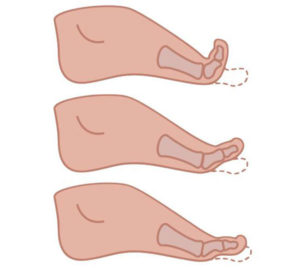19 Mar Hallux Limitus/Rigidus
Stiffness and pain of the big toe joint is termed Hallux Rigidus or Hallux Limitus. Hallux is the medical term for the big toe and the terms rigidus and limitus describe the extent to which the toe can move.
Cause:
Many studies have been conducted trying to determine the exact cause of hallux limitus. Theories include, trauma, genetics, poor shoes, elongated metatarsal and biomechanical abnormalities.
Abnormal alignment of the metatarsal bone relative to the proximal phalanx (big toe bone) is the most common biomechanical factor in developing Hallux Limitus/Rigidus. During a normal stride, whether walking or running, the proximal phalanx must most up and over the metatarsal. In order to do this, the metatarsal bone must be slightly lower then the proximal phalanx. If the metatarsal bone is slightly elevated (or higher) then the proximal phalanx, the big toe cannot move up and over the metatarsal. Instead, a jamming of the joint occurs. Repeated jamming over a period of years leads to degeneration of the joint. Cartilage is worn away and large bone spurs form on the top of the joint. The combination of cartilage loss and bone spurring causes loss of motion of the joint.

Diagnosis:
Diagnosis by a podiatrist is usually made via clinical exam and x-rays. Sign and symptoms include:
- Spasms of the overlying tendons
- Inability to move the big toe joint without pain
- Unable to wear high heel shoes without pain in the great to joint
- Unable to run without pain in the big to joint
- Patient must turn their foot slightly sideways when walking to prevent pain
- Painful Bump on the top of the big toe joint

